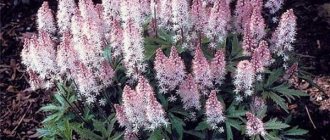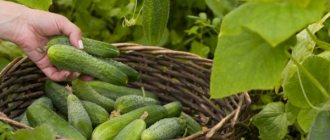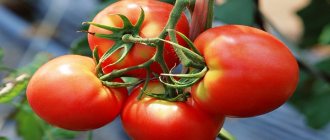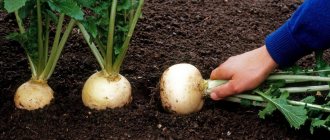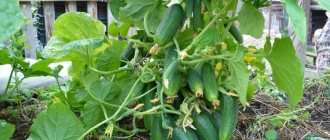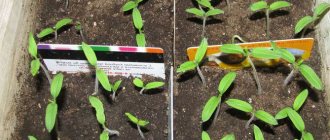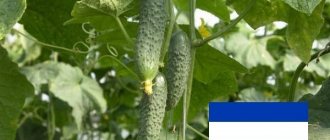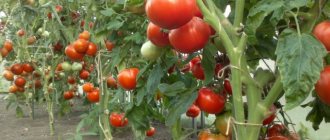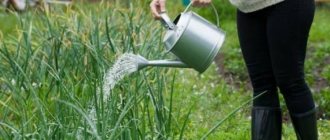Exotic plants periodically cause a real sensation among flower growers, but very quickly disappear, flashing like a star and going out as interest wanes. Babiana flower is still just taking off. This plant appeared relatively recently, but it is already making the hearts of people in love with floriculture skip a beat.
Today, Babiana stricta and New Hybrids are popular - these two varieties are rich in rich shades of petals and will become a real decoration of any garden. Look at this page for a description and photo of flowers and bulbs; advice is also given on how to cultivate the crop. The proposed planting and care rules will help you avoid many common problems. In principle, planting and caring for babiana in open ground does not present any particular difficulties. However, there are some points you should know.
Description of Babiana
The plant is characterized by short stature, its height rarely exceeds 30 centimeters. The stems are usually simple or branched.
The leaves are long and dense. Sometimes covered with sparse hard hair. Each stem produces an average of three to five leaves.
Babiana flowers are bright, beautiful and can have a variety of shapes: from bell-like to dense tassels. The shades are also different: pink, purple, yellow or blue. After flowering ends, the plant produces a fruit in the form of a capsule containing seeds. They can be used as planting material.
It is noteworthy that only some, but not all, species of babiana can smell pleasant when flowering.
How to save planting material?
The photo shows babiana bulbs: at the end of the season they are dug up for storage
In mid-autumn, after flowering ends, the above-ground part of the flower dries out. In order to admire the blooms again next year, you need to follow these steps:
- Carefully dig the bulbs out of the soil. This is best done in dry weather.
- Clean them from the soil and dry them a little.
- Inspect the bulbs carefully. It is better not to store those that are damaged. They can cause rot infection of the rest of the planting material.
- Do not separate the babies from the mother's bulb. It's better to do this in the spring.
- Place the tubers for storage in a dry, cool room with a temperature of about ten degrees Celsius. They can be stored both in containers with sand and peat, and in ordinary paper bags.
For reference: using plastic bags for storage is strictly prohibited. The previous tips concerned the case when babiana grew in the ground. If you used it as a potted plant, the rules are slightly different.
We bring the pot with the plant into the house and continue watering until the plant sheds its leaves. Then we provide the flower with a period of rest. The bulb can be in the same container. There is no need to dig it up. But you need to place the plant with a pot in a dry place with a slightly positive (up to 10º C) temperature.
Plant varieties
At the moment, there are only three most common types of this plant. These include varieties such as:
Direct, or Babiana Stricta. Height - up to 25 centimeters. The flower is tubular in blue or purple. The leaves are narrow and long.
Folded. Height - no more than 20 centimeters. It is distinguished by the presence of yellow or white spots on purple flowers. This variety smells aromatic.
Red and blue. The most popular and shortest species known today. Starts flowering earlier than all other varieties. Height no more than 15 centimeters. Flowers are red or pink. The leaves are thin, grass-like.
Babian care
Caring for babians does not have any special features and consists of timely watering and feeding the plant.
Watering
The plant needs regular watering during the growing season, so it is necessary to prevent the earthen ball from drying out, as this can cause a slowdown in growth and flowering.
In addition, on hot days you need to additionally spray the leaves at intervals of 1 time every 2 days. At the end of the flowering period, moderate watering is carried out until the plant completely sheds its foliage.
Top dressing
During flowering, the crop needs potassium-phosphorus supplements, which are applied once a week. Organic fertilizers in liquid form are recommended to be applied once every 14 days.
It is recommended to follow this feeding scheme:
- I – 2 weeks after planting;
- II – during the appearance of flower stalks;
- III – 2 weeks before digging up tubers for storage.
Bulb storage
In regions with mild, warm winters, it is permissible to leave the bulbs to overwinter in the ground. To do this, they are sprinkled with sand or peat until spring. Still, it would be safer to dig up the bulbs for the winter and store them in a cool room at a temperature of +10+12 degrees in containers filled with sand or peat. Indeed, when the thickness of the snow cover is less than 40 cm, the likelihood of unsuccessful overwintering of plants increases.
Planting and care in open ground
In order for a flower to take root on a plot or in a pot, it is important to know how to plant babiana correctly. These include the following important rules:
- the distance between the bulbs should be at least seven centimeters,
- there should be no strong cold winds in the area where the flower grows,
- the optimal temperature is from 22 to 30 degrees; if it is warmer, the plant will begin to shed flowers.
Among other things, we also recommend that you follow other rules. We'll talk about them further.
Watering
During the growing season, watering should be regular; the soil should not be allowed to dry out. During the flowering period, plants increase watering to maintain the splendor and beauty of the flowers. In hot weather, it is also worth spraying the babiana additionally.
Land selection
For soil, you should choose high-quality, light soil mixed with a drainage compound. It is important that water does not linger in the earthen coma. Sand can also be mixed into the soil. When planting the plant, make sure that the soil is warm, otherwise it will be difficult for the babian to take root.
Transplantation
If we are talking about growing a plant on the site, then in the spring it is worth replanting the plant. This will help the babiana bloom even more magnificently and beautifully. In this case, the flowers will turn out large and bright.
Growing from seeds to seedlings
The method is less common than planting bulbs. Seeds for propagation of plants native to southern countries are rarely used; it is easier to grow Babiana from bulbs.
Soil and container
The soil should be light and nutritious. It is important that the substrate for babiana is moisture-permeable, absorbs and releases moisture well. Do not use acidic, heavy soil. It is useful to add a little peat, sand and perlite to the soil to increase the looseness and nutritional value of the substrate. The soil in the box for growing seedlings and on the plot should be approximately the same composition.
A general container is suitable for growing tropical species. The grown seedlings are planted in separate containers.
Seed preparation
Unlike some species, small babian seeds should not be immediately placed in the ground: germination will be below average. The best option is to stratify the planting material.
How to proceed:
- First, the seeds are placed in damp gauze, wrapped, then put in a cool place, with a temperature of no more than +8 degrees, for example, on the bottom shelf in the refrigerator, in a compartment for storing vegetables.
- It is important that light does not penetrate into the “cocoon”.
- During the stratification period, the material is periodically moistened and the condition of the planting material is checked.
- After 4 weeks, hardened seeds are taken out, dried, and planted in the substrate.
- It is useful to soak in a growth stimulator: use the drugs Epin, Kornevin.
Seedling care
Babiana seedlings should be in a warm place with good lighting.
High humidity is useful, but you should not flood the soil with planted “seeds”. Note! It takes quite a long time for seeds to germinate. It is no coincidence that seedlings of the southern flower are planted in the month of March, so that at the end of May the seedlings can be planted in the ground. Late movement of seedlings can lead to unpleasant consequences: the plants will not have time to grow stronger and stretch sufficiently, the bulbs will be small and unsuitable for storage, with a deficiency of nutrients.
Transplanting
Important points:
- wait until the soil and air warm up well;
- observe the interval between sprouts;
- do not wait until the seedlings “outgrow” the optimal time - early May, with slight adjustments to local conditions;
- if it is still cool in May-June, then you should give up growing southern plants and choose a less capricious species, for example, Mallow or Gaillardia.
Types of pests and diseases
Babiana is quite susceptible to diseases and various pests. Among the latter it is worth highlighting such as:
- thrips gladiolus,
- bulb mite,
- aphid,
- spider mite,
- mealybug.
Moreover, thrips is considered the most harmful. Because it doesn’t just parasitize the plant, it can destroy the flower. As a rule, the standard “Decis” helps against all types of pests.
If you notice that the plant has stopped blooming, but there are no diseases, then you should probably just transplant the babiana to another place.
Take a look also at the article about: Yarrow: description of species, features and properties
Reproduction
To propagate the plant, seeds or baby tubers can be used. Growing a flower from seeds is a rather problematic procedure. This is explained by the fact that despite the long cultivation period, the grower does not always receive positive results. Babiana grows quite slowly from seeds. Even if she is provided with proper care, she will bloom three years after planting.
Helpful information! The most affordable, fastest and optimal way to propagate a flower is to use baby tubers, which are first carefully separated from the tubers. It is recommended to carry out the procedure in the spring immediately before planting in the ground.
Wintering
In open ground, tubers are not left for the cold period. Be sure to dig up all the bulbs in the fall, otherwise the “baboon delicacy” will freeze. Store planting material at a low temperature: +8..+10°C, in a dark room, in containers with peat or paper bags. After harvesting, the tubers are dried well. It can be treated with a fungicide to prevent rotting. Shortly before spring planting, the bulbs are soaked in the growth stimulator Heteroauxin or Kornevin to activate the forcing of peduncles and leaves.
Babiana in landscape design
A highly decorative plant is used to create mixborders, planted in flower beds, and creates bright spots of color. The low-growing variety looks great against a green lawn and in containers. Interesting options are obtained by group planting flowers of the same variety: bright buds always attract attention. The spectacular, changing shades of red and blue Babiana throughout the flowering period look original.
More photographs of a low-growing perennial with a corm can be seen in the following video:
Source

